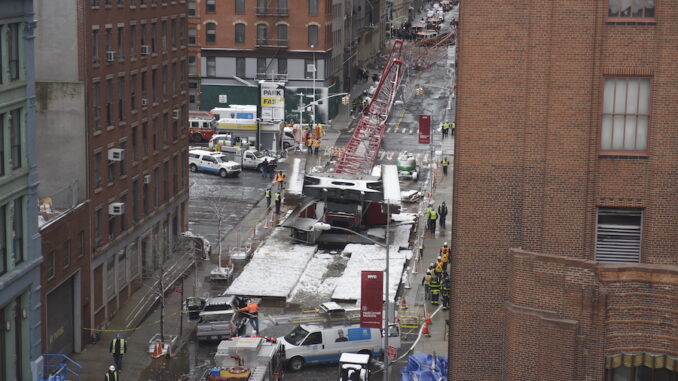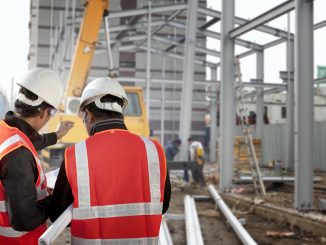
Even the most novice contractors understand that there are all sorts of risks associated with construction projects.
So, what can you do about it?
Well—of course—some risk are unforeseen and there’s not much you can do about them—but consider the risks that you can mitigate. If you catch them early enough, you can save yourself a lot of headaches… and even some money.
For that reason, let’s take a look at some of the most common risks you can expect during a construction project, as well as how you can mitigate each…
Unforeseen Site Conditions
One of the most common risks in construction projects is the discovery of unforeseen site conditions—such as soil issues or difficult rocks—once work has begun. Of course, unforeseen site conditions like this can lead to cost overruns, delays, and changes in the scope of work.
To mitigate this risk is to include language in the contract that addresses how exactly unforeseen conditions will be handled. This might include a clause that allows for changes in the scope of work or even additional compensation for unexpected costs.
Unforeseen Project Changes
Another risk is the possibility of unforeseen changes to the project—such as changes in design or materials. In addition to delays and cost overruns, this can even result in disputes between the contractor and project owner.
To mitigate this risk, it is crucial to have a clear and thorough scope of work and contract that includes provisions for potential changes in the project. This might include a change order process that outlines how changes will be requested, approved, and compensated.
Labor Shortages
Labor shortages can be a significant risk in construction projects—as they can lead to increased costs and delays. Consider how this risk can even be exacerbated by factors such as seasonal demand and tight labor markets.
To mitigate this risk, contractors should be proactive with their recruiting and may need to offer competitive wages and benefits to attract (and retain) skilled workers. In addition, you might want to remain flexible with your scheduling to accommodate these potential labor shortages.
Material Shortages
Material shortages are another potential risk in construction projects—especially during periods of high demand or disruptions with the supply chain.
To mitigate this risk, contractors should be diligent with their procurement efforts—including identifying alternative suppliers and ordering materials in advance. Of course, there are other procurement efforts you should consider—so be sure and check out the lesson dedicated entirely to procurement.
Weather Conditions
Weather is almost always a factor on construction projects—for outdoor construction projects, of course. Poor or extreme weather is one of the leading causes of delays, safety concerns, and changes in the scope of work.
To mitigate this risk, contractors must be attentive to their scheduling and planning efforts—including building in extra time for potential weather delays like rain, snow, wind, and extreme heat. And—again—safety should always be the number one factor when it comes to weather conditions.
Financial Risk
Of course, financial risk is almost always a factor on construction projects—including the risk of cost overruns, disputes with the client, and changes in the project scope.
To mitigate this risk, contractors must be attentive to cost estimating and planning efforts—including incorporating contingencies for unexpected costs. Contractors should also have a clear and detailed contract that addresses payment terms, change orders, and dispute resolution processes. And, it can never hurt to have insurance coverage to protect against financial losses.
Permitting and Regulatory Compliance
Depending on the project and location, obtaining permits and complying with regulatory requirements can be challenging—often leading to project delays and increased costs.
To mitigate this risk, contractors should carefully research the permitting and regulatory requirements for the project and build in extra time and resources to ensure compliance. For example, a contractor building a new office building in a city with strict zoning regulations should research local requirements, build extra time into the schedule, and communicate with the local authorities to avoid costly delays or disputes.
Design or Engineering Deficiencies
If the project design or engineering plans are incomplete or contain errors, this can lead to delays, cost overruns, and potential safety issues.
To address this risk, it might be helpful for contractors to review the design and engineering plans in detail before bidding on the project—and to seek clarification or additional information, as needed. You should also be prepared to work closely with the project owner or design team to address any deficiencies that are identified.
Safety Risks
To state the obvious—construction work is inherently dangerous—and safety risks can lead to injuries, lawsuits, and even death.
To mitigate this risk, contractors must prioritize safety and ensure that all workers are trained and equipped to perform their jobs safely. You should also have a comprehensive safety plan in place and should be prepared to respond quickly to any potential safety incidents or emergencies.
Subcontractor Issues
If subcontractors fail to perform their work properly—or on time—this can lead to delays, cost overruns, and potential disputes with the project owner
To mitigate this risk, contractors should carefully vet potential subcontractors to ensure they have the necessary skills and resources to complete the work properly. You should also have a clear and detailed subcontractor agreement—which outlines expectations, timelines, and compensation terms.
Are there other risks associated with construction projects? Of course. Whatever they may be—we just recommend spotting and dealing with them as early as possible in the process—ideally during the bidding stage.
View the complete article here.
How can construction contractors mitigate the risk of unforeseen site conditions during a project?
Contractors can address the risk of unforeseen site conditions by incorporating contractual language that outlines how such conditions will be managed, including provisions for changes in the scope of work and additional compensation for unexpected costs.
How should contractors deal with labor shortages in construction projects to prevent delays and increased costs?
To mitigate the risk of labor shortages, contractors should proactively recruit skilled workers, offer competitive wages and benefits, and remain flexible with scheduling to accommodate potential labor shortages.












































